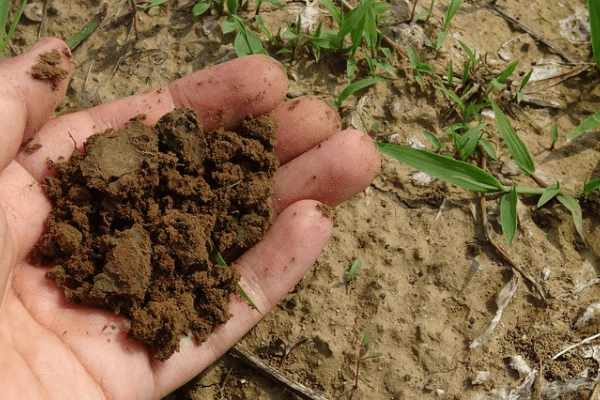The use of biodegradable, compostable, disintegrable and ecotoxicity-free materials are trends that cannot be stopped. More and more consumers are demanding environmentally friendly biodegradable products and manufacturers have to comply with new regulations. In this article, we explain what biodegradability is and how different materials are tested according to regulations.
What is biodegradability?
Biodegradability is the ability of organic substances and materials to break down into simpler substances through the action of enzymes from microorganisms. If this process is completed, the initial organic substances are completely converted into simple inorganic molecules, such as water, carbon dioxide and methane.
Biodegradation is part of the natural cycle of life. When plant and animal organisms die, microorganisms throughout the environment feed on the organic matter through biodegradation processes and release water and carbon dioxide into the atmosphere, thus closing the cycle.
By mimicking and enhancing these natural processes, organic waste from human activities can also be disposed of through biodegradation.
In nature, all organic wastes take some time to biodegrade; for example, straw and wood take longer than starch and cellulose. Similarly, in cold and dry environments, biodegradation processes are slower than in warm and humid environments. This means that biodegradation is strongly influenced by the chemical nature of the substance or material to be biodegraded and by the environment in which this process takes place. Therefore, it is important to take into account the materials used in the industry and their composition. Nowadays it is a fact that eco-design is becoming more relevant in the industrial process in order to protect the environment.
Industrial biodegradation and composting
The environments in which biodegradation occurs at a constant rate and in which it can be managed industrially are those of composting and anaerobic digestion. In these systems it is possible to process solid organic waste, including man-made substances (such as biodegradable plastic), for which the rate of biodegradation is compatible with these processes.
Compost is the result of disintegration and aerobic biodegradation. Composting will therefore produce mature compost, which is a fertilizer. Whereas anaerobic digestion, followed by stabilization through composting, will produce biogas in addition to compost.
Composting is currently applied to selected wastes containing only biodegradable organic matter and to biodegradable plastics that meet the criteria set by standards defining compostable materials. The EU standard EN13432 relating to organic recycling of packaging by composting, and its sister standard EN 14995 which applies the same criteria as EN13432 to the more general area of plastics.
Analysis and testing for product biodegradability
The selection of the most appropriate test method to demonstrate the biodegradability of a finished product is fundamental to the manufacture of materials.
Except for the simplest products, part of the development and commercialization of biodegradable products will require testing of formulation components and possibly even variants of material construction.
Many factors can affect the real-life biodegradable performance of a finished product and it is not uncommon for a product to fail a specific test method due to new product characteristics associated with the finished product formulation. The most common factors affecting biodegradability are related to the water solubility or phase distribution of the material.
How biodegradation testing works
Biodegradation tests measure the complex biochemical process that occurs when microorganisms consume a particular type of material. They are used to determine the biodegradability of products in a given or intended use environment.
The biodegradability of a product depends on the amount of carbon available for microbial consumption. Biodegradation tests for plastics are usually conducted under conditions similar to commercial composting while biodegradation tests for liquids are conducted in representative aquatic systems.
Currently, regulations require biodegradability claims to be based on aerobic biodegradation, which typically measures oxygen consumption, CO2 production and the status of inorganic carbon intermediates.
Industrial disintegration testing of materials and regulations
Biodegradability testing addresses the deterioration of the physical properties of environmentally friendly products and materials under specific environmental conditions. Testing of biodegradable products must be performed according to a number of international standards such as ASTM D6400 and ASTM D5338 defined by the American Society for Testing and Materials, ISO 17088 and ISO 16929 established by the International Organization for Standardization or the European standard EN 13432.
ISO 16929 is usually applied for pilot-scale composting and OECD 301B for liquid biodegradation. On the other hand, the most common test for biodegradation of solids is ISO 16929, for liquids OECD 301 and ASTM D5864 for lubricants.
However, these tests are complemented by simultaneous biodegradation, toxicology and bioaccumulation tests to perform an analysis of the environmental fate of the product for regulatory and third-party label claims.
ISO 20200
Designed specifically for plastic materials, this test method allows evaluation of the degree of disintegration under simulated aerobic composting conditions, using sieving and mass change techniques. It thus indicates the probability that a plastic will disintegrate when placed in the compost environment.
Ecotoxicological Testing
An important consideration at the end of a product’s life is to assess the toxicity of materials that may come into contact with in the environment. Ecotoxicological tests are used to evaluate the final compost from the ISO 20200 analysis by quantitatively measuring more than 200 components, including, but not limited to, metals, volatile organics, phenols, chlorinated hydrocarbons, petroleum hydrocarbons, nitrogen and other pesticides, etc.
In conclusion, biodegradable product testing examines compostable materials, intermediates and additives, as well as their final characteristics and composition. Each of these characteristics must undergo chemical, biodegradability, disintegration and ecotoxicity testing to ensure that products and materials support sustainability and comply with regulations. To help you ensure the marketing and sale of biodegradable products and meet market requirements for environmental protection, Infinitia offers customized services including testing, advice and support for the acquisition of certificates. Do not hesitate to contact us.





